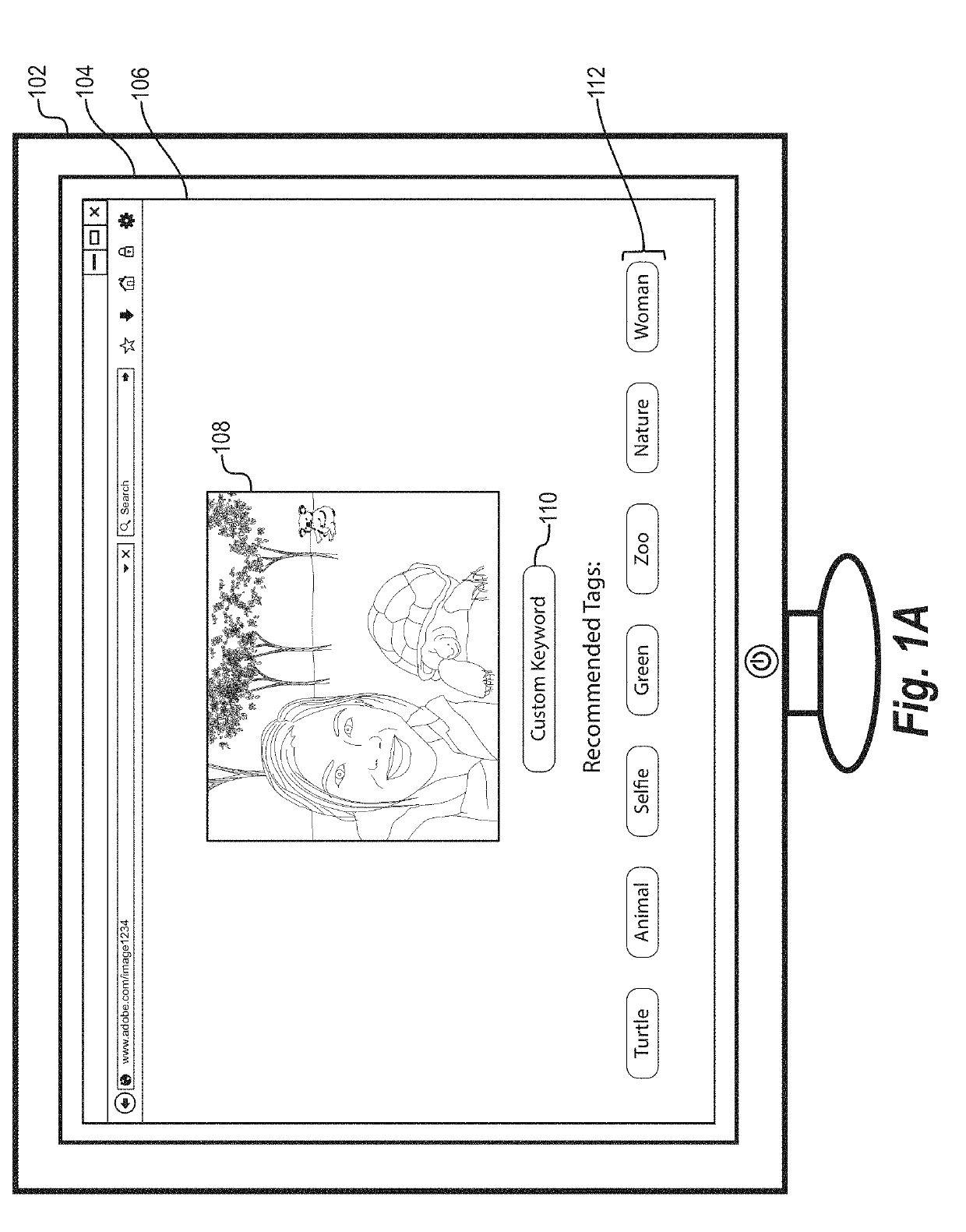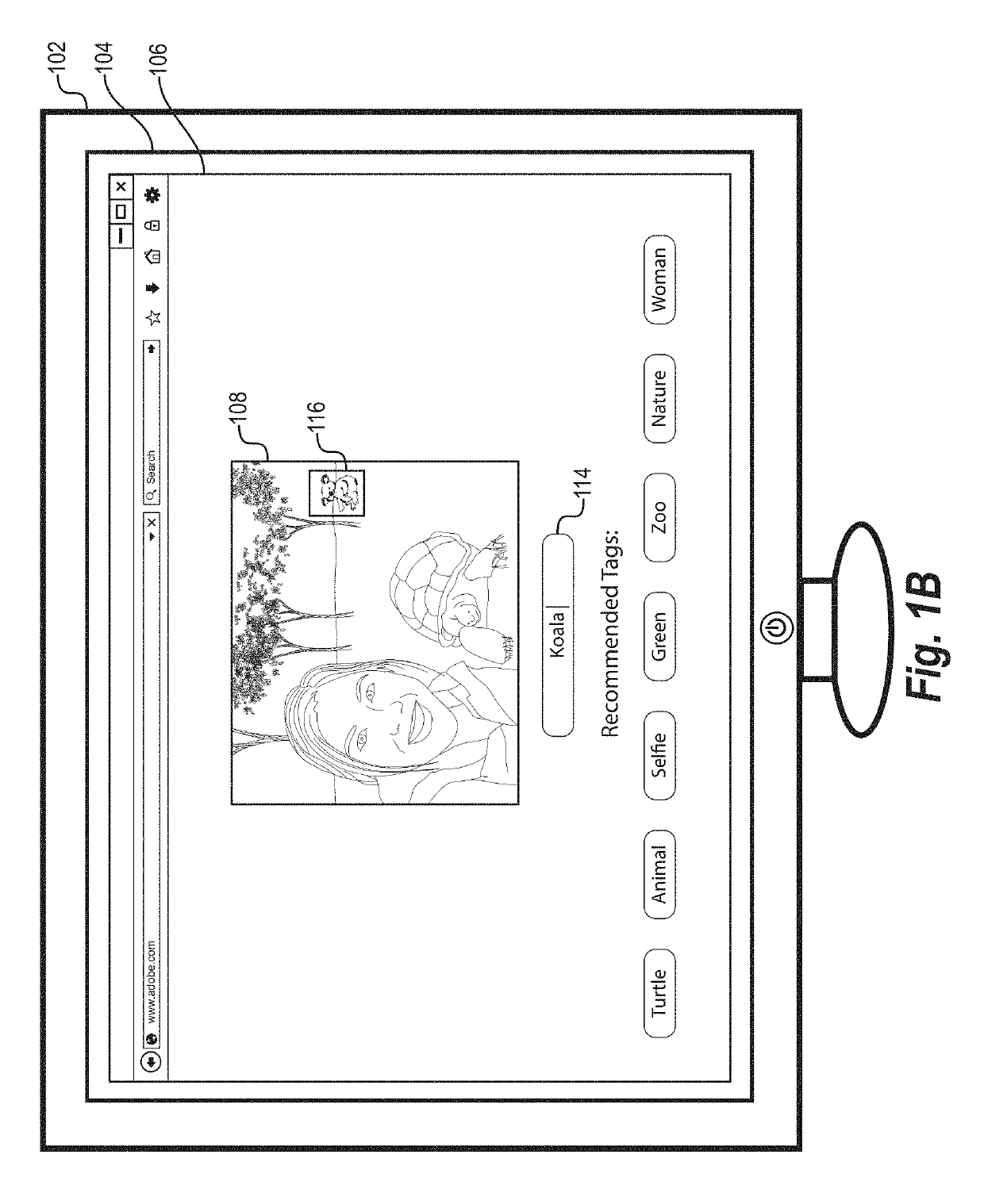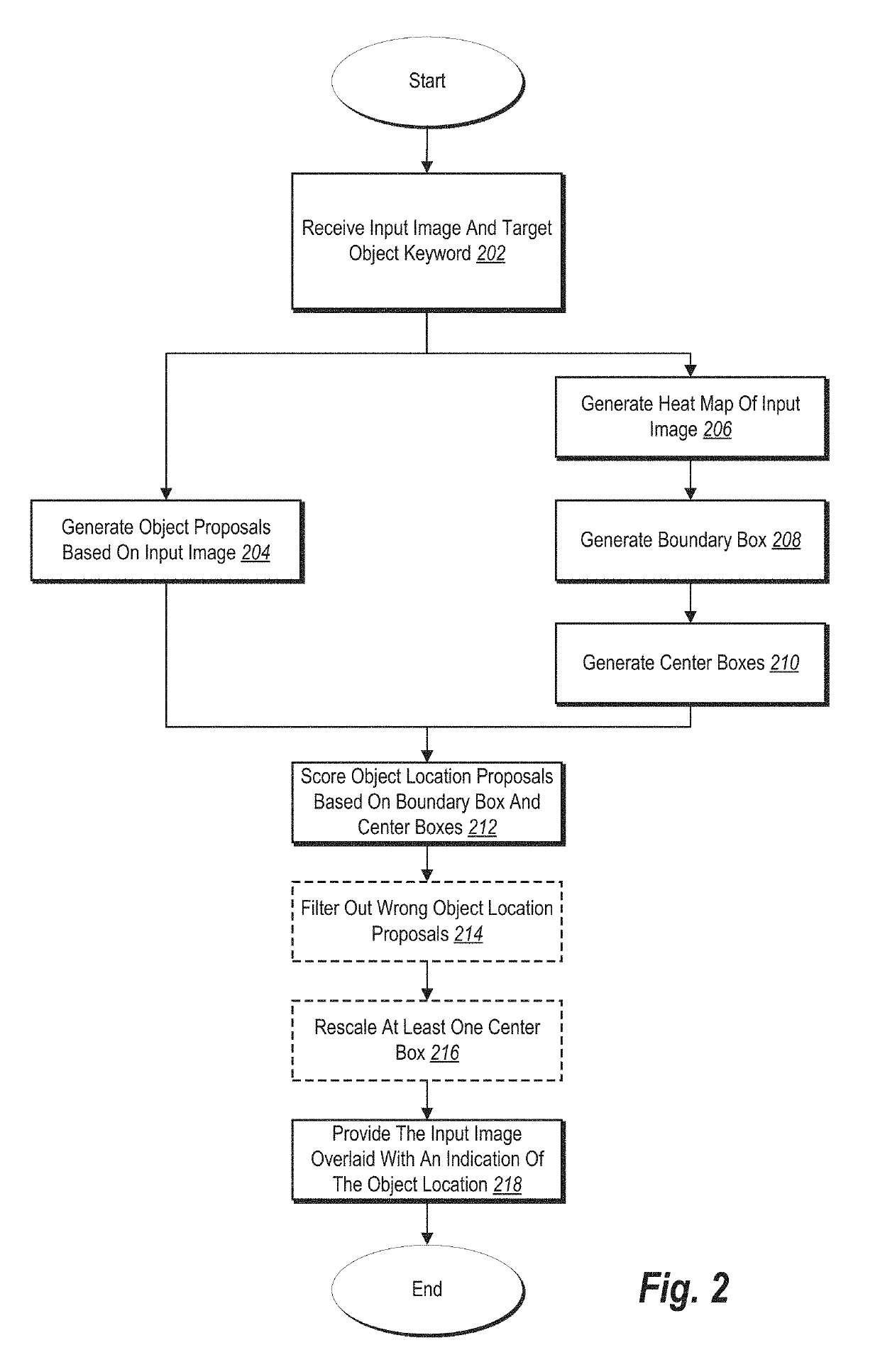Detecting objects using a weakly supervised model
a weakly supervised model and object detection technology, applied in the field of automatic object detection, can solve the problems of insufficient prediction, time-consuming and expensive training of annotated images, and the inability to provide useful predictions in conventional object detection systems, so as to achieve the effect of quick and precise detection of objects
- Summary
- Abstract
- Description
- Claims
- Application Information
AI Technical Summary
Benefits of technology
Problems solved by technology
Method used
Image
Examples
Embodiment Construction
[0018]This application discloses various embodiments of an object detection system that uses a weakly supervised learning model to perform object detection. In accordance with one or more embodiments, the object detection system detects objects in an input image based on a received target object keyword. In particular, the object detection system first generates a heat map of the input image based on the target object keyword. The object detection system then generates various bounding boxes based on a pixel analysis of the heat map and scores object location proposals based on an interplay between each proposal and the generated bounding boxes. The object detection system outputs an indication of the highest scoring object location proposal overlaid on input image in order to show the position of the detected object associated with the target object keyword in the input image.
[0019]To further illustrate the features and functionality of the object detection system, in one or more e...
PUM
 Login to View More
Login to View More Abstract
Description
Claims
Application Information
 Login to View More
Login to View More - R&D
- Intellectual Property
- Life Sciences
- Materials
- Tech Scout
- Unparalleled Data Quality
- Higher Quality Content
- 60% Fewer Hallucinations
Browse by: Latest US Patents, China's latest patents, Technical Efficacy Thesaurus, Application Domain, Technology Topic, Popular Technical Reports.
© 2025 PatSnap. All rights reserved.Legal|Privacy policy|Modern Slavery Act Transparency Statement|Sitemap|About US| Contact US: help@patsnap.com



